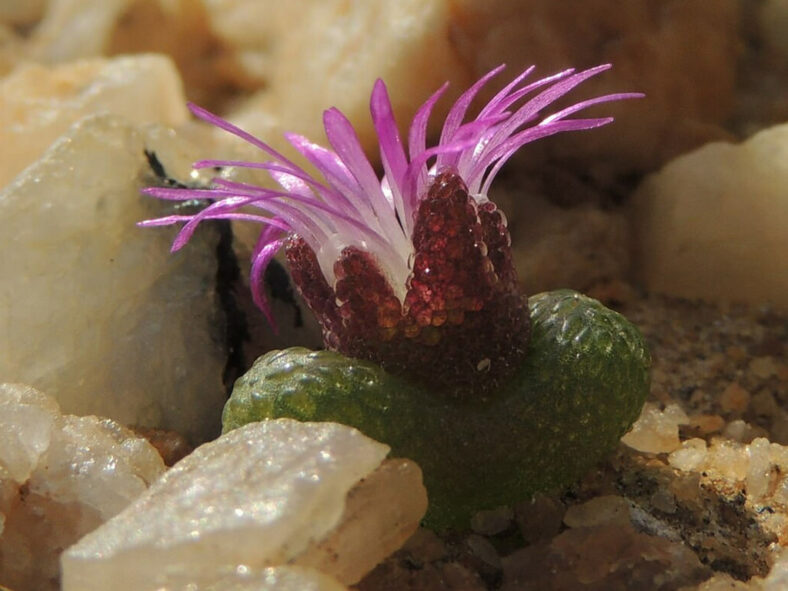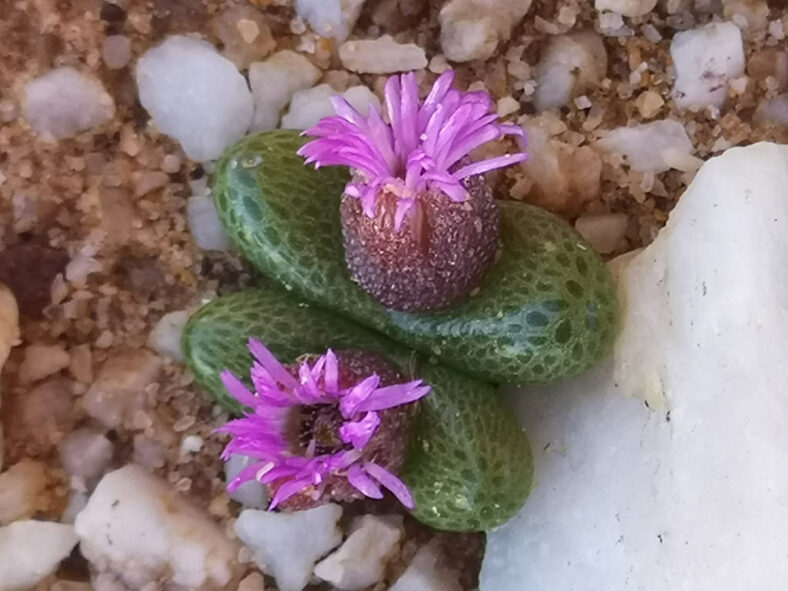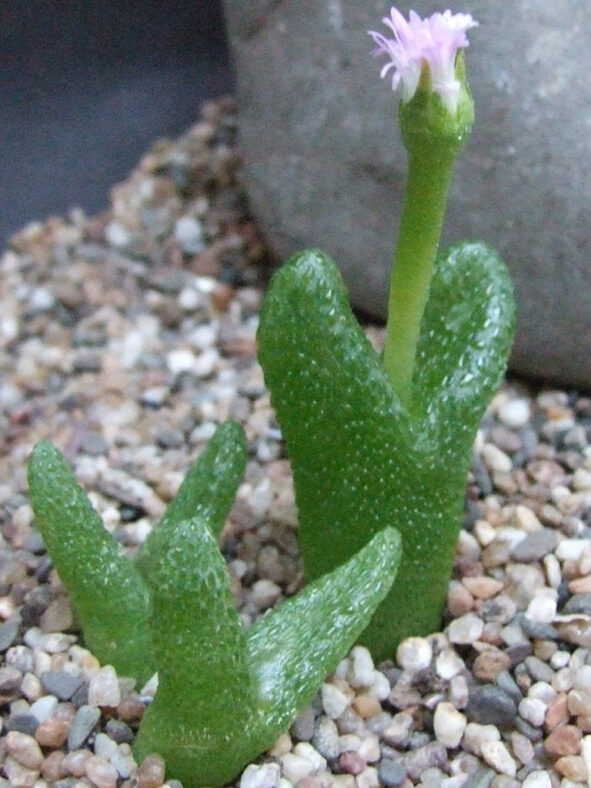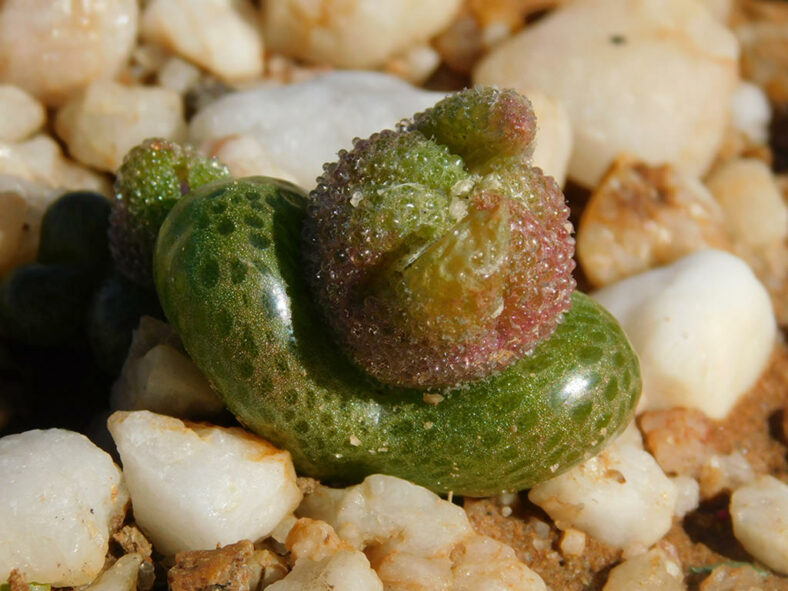Diplosoma luckhoffii is a very rare and cryptic species. While some sources suggest that growing this plant can be challenging, others claim it is relatively easy. As long as you remember that it is a winter grower and requires a strict resting period without watering, it is easy to grow.
Scientific Name
Diplosoma luckhoffii (L.Bolus) Schwantes
Synonym(s)
Maughania luckhoffii, Maughaniella luckhoffii, Monilaria luckhoffii
Scientific Classification
Family: Aizoaceae
Subfamily: Ruschioideae
Tribe: Ruschieae
Genus: Diplosoma
Etymology
The specific epithet "luckhoffii" (pronounced luk-HOF-ee-eye) honors James Lückhoff (1875–1973), a physician at Cape Town and collector of mesembs and other succulents.
Origin
Diplosoma luckhoffii is native to South Africa. It grows in saline soils with a cover of quartz pebbles in the Knersvlakte and southern Namaqualand coast around Kotzesrus and Lutzville.
Description
Diplosoma luckhoffii is a dwarf succulent with a pair of green, softly fleshy leaves covered with round, translucent, water-storage cells. It can grow up to 1.2 inches (3 cm) tall, and during its dormancy, it persists as a solitary, button-like body protected by a layer of dried-up leaf tissue. The leaves are opposite, ascending, and fused at the base.
In the winter, Diplosoma luckhoffii produces pale pink flowers that can reach a diameter of 1.2 inches (3 cm). Although the flowers are showy, they do not open up very well.

How to Grow and Care for Diplosoma luckhoffii
Light: This succulent requires bright light but not too much direct sunlight. So, a windowsill that receives 4 to 5 hours of direct sunlight in the morning and partial shade in the afternoon will be a perfect spot for indoor growing.
Soil: Diplosoma luckhoffii thrives in porous soil, allowing the water to drain away quickly. Therefore, use commercial soil for succulents or make your own well-draining mix.
Temperature: High temperatures are not a problem as long as there is plenty of fresh air, but this plant is not cold-hardy. It grows best in USDA Plant Hardiness Zones 10a to 11b, with average minimum winter temperatures ranging from 30 to 50 °F (-1.1 to 10 °C).
Watering: To keep your plant healthy, it is most important to know when, how much, and how often to water. During the dormant period, usually in summer, Diplosoma luckhoffii requires little or no water. In the fall, once it grows again, water thoroughly but allow the soil to dry between waterings.
Fertilizing: As long as you repot this plant every two years, it does not need fertilizer.
Repotting: Even if your plant can stay happy in the same pot for years, you can repot it once in a while to give it more space anytime during the growing season. However, the best time is at the beginning of the growing season.
Propagation: Although it is usually started from seeds, Diplosoma luckhoffii can be easily propagated by division. The best time to divide the plant is late summer, just before it begins to break dormancy, while the fall is ideal for sowing the seeds.
Learn more at How to Grow and Care for Mesembs.
Toxicity of Diplosoma luckhoffii
Diplosoma luckhoffii is considered non-toxic and safe around kids and pets.
Links
- Back to genus Diplosoma
- Succupedia: Browse succulents by Scientific Name, Common Name, Genus, Family, USDA Hardiness Zone, Origin, or cacti by Genus
Photo Gallery
Click on a photo to see a larger version.


